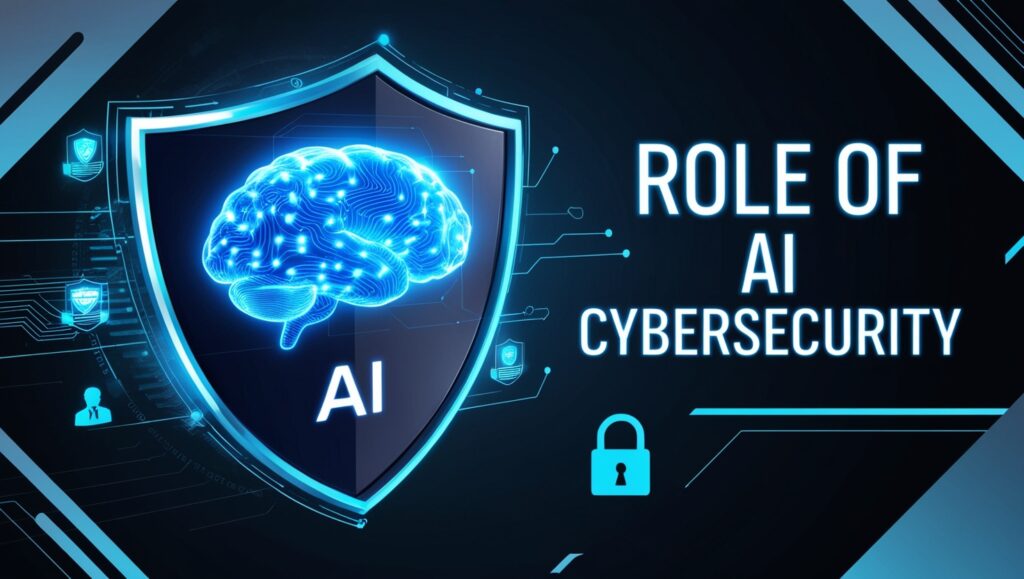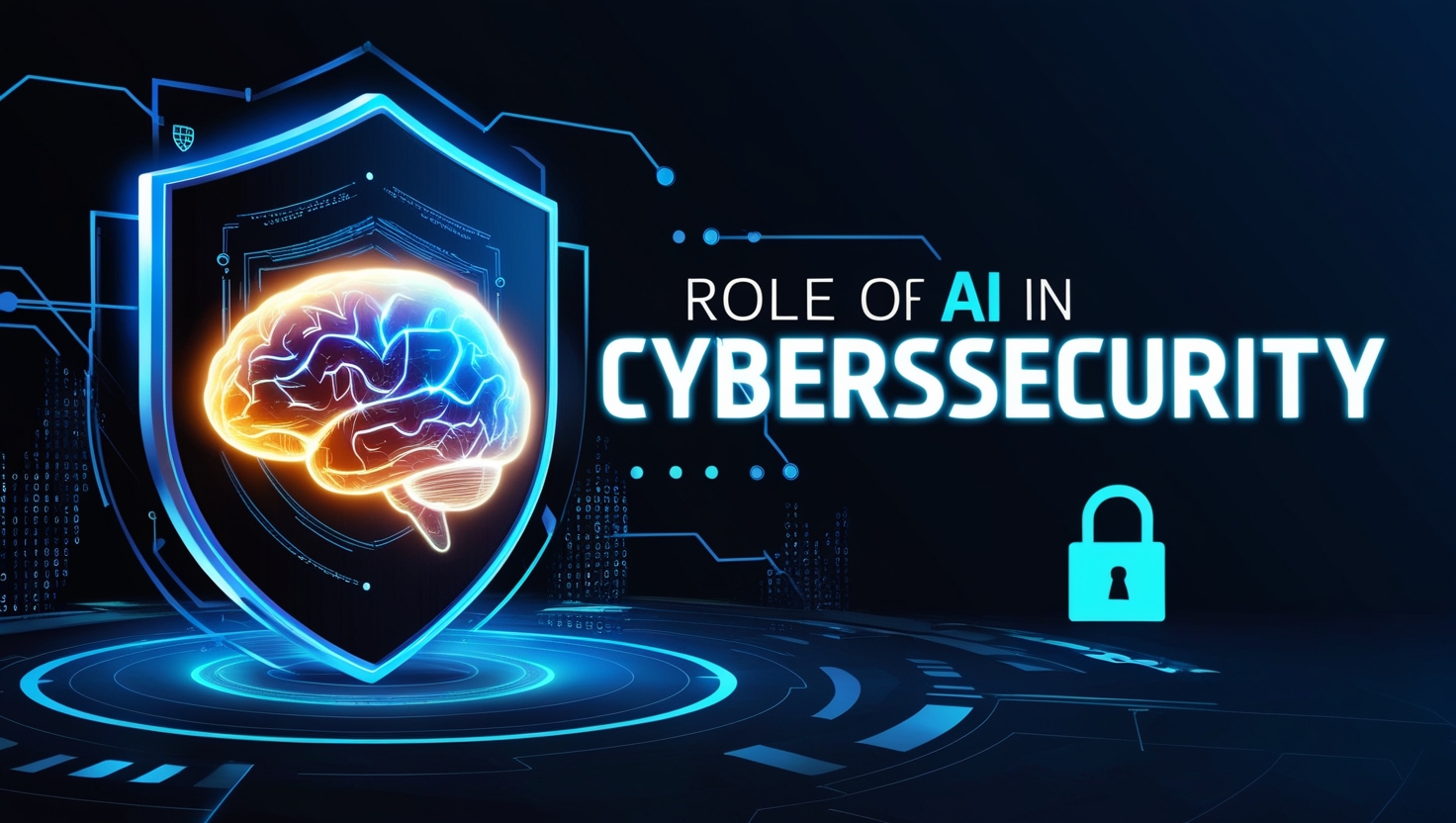1. Introduction: AI’s Growing Influence in Cybersecurity
In today’s digital age, cyber threats are evolving rapidly, making traditional security measures insufficient. The role of AI in cybersecurity has become a game-changer, offering advanced solutions for detecting and preventing cyberattacks. AI-driven cybersecurity enhances threat detection, automates response mechanisms, and provides predictive analytics to foresee potential security risks. As cybercriminals use sophisticated attack methods, integrating AI into cybersecurity is essential for strengthening digital defenses.

2. How AI is Enhancing Cybersecurity
The role of AI in cybersecurity is pivotal in automating security tasks, reducing human error, and accelerating threat response. AI-powered systems analyze vast amounts of data in real time, identifying patterns and anomalies that indicate potential threats. AI also helps in fraud detection, identity verification, and improving overall security postures. Organizations worldwide are leveraging AI to minimize risks and fortify their cybersecurity infrastructure.
3. AI-Powered Threat Detection and Analysis
One of the key aspects of AI in cybersecurity is its ability to detect and analyze cyber threats efficiently. AI-driven security systems utilize machine learning algorithms to identify malware, phishing attacks, and advanced persistent threats (APTs). AI enhances security monitoring by:
- Identifying malicious activities faster than traditional methods.
- Reducing false positives and improving detection accuracy.
- Analyzing large datasets to predict potential security breaches.
4. Machine Learning and Anomaly Detection
Machine learning plays a critical role in AI-driven cybersecurity solutions. AI algorithms are trained to recognize normal user behavior and detect deviations that indicate potential threats. The role of AI in cybersecurity is evident in anomaly detection, where AI:
- Monitors network traffic and identifies unusual activities.
- Detects insider threats and suspicious login attempts.
- Improves endpoint security by analyzing device behavior.
By leveraging machine learning, organizations can proactively prevent cyberattacks and enhance their security framework.
5. Automated Incident Response with AI
AI-driven cybersecurity solutions not only detect threats but also respond to them in real time. Automated incident response minimizes the time required to mitigate attacks and reduces dependency on manual intervention. Key benefits include:
- AI-powered chatbots handling security queries and alerts.
- Automated threat containment and quarantine mechanisms.
- Reducing the time taken to patch vulnerabilities and neutralize attacks.
6. AI in Threat Intelligence and Predictive Analytics
Threat intelligence is a vital component of cybersecurity, and AI enhances its efficiency by providing predictive analytics. AI-driven threat intelligence helps organizations anticipate cyber threats before they occur. This includes:
- Identifying emerging attack trends and potential vulnerabilities.
- Predicting ransomware attacks and phishing attempts.
- Automating risk assessments and security audits.
AI’s ability to analyze threat patterns makes it an invaluable asset in proactive cybersecurity defense strategies.
7. AI-Powered Security Tools and Frameworks
Various AI-powered security tools and frameworks have been developed to strengthen digital security. Some of the most popular AI-driven security solutions include:
- Darktrace: Uses AI to detect and respond to cyber threats in real time.
- Cylance: AI-based antivirus solution for proactive threat prevention.
- CrowdStrike Falcon: AI-driven endpoint security platform.
- IBM Watson for Cybersecurity: AI-powered threat intelligence and risk assessment tool.
These AI-powered tools help organizations automate security operations and enhance their overall cyber defense mechanisms.
8. Challenges and Limitations of AI in Cybersecurity
Despite its benefits, AI in cybersecurity also has challenges and limitations. Some of the key issues include:
- False Positives: AI may sometimes flag legitimate activities as threats.
- Adversarial AI: Cybercriminals are developing AI-driven attacks to bypass AI security systems.
- High Implementation Costs: Deploying AI-driven cybersecurity solutions can be expensive for small businesses.
- Data Privacy Concerns: AI systems require large amounts of data, raising privacy and ethical concerns.
Addressing these challenges is crucial to maximizing the potential of AI in cybersecurity.
9. The Future of AI in Cybersecurity
The future of AI in cybersecurity looks promising, with continuous advancements in machine learning and automation. Some emerging trends include:
- AI-driven security automation for large-scale threat mitigation.
- Integration of AI with blockchain for enhanced security.
- Improved AI-based behavioral analytics to detect insider threats.
- Advancements in AI-powered deception technology to trick hackers.
As cyber threats become more sophisticated, AI will continue to evolve and play a crucial role in securing digital assets.
10. Conclusion: AI as a Game Changer in Cybersecurity
The role of AI in cybersecurity is transforming the way organizations defend against cyber threats. AI enhances threat detection, automates incident response, and provides predictive analytics to prevent attacks before they happen. While challenges exist, AI-driven cybersecurity solutions offer immense potential in strengthening digital security.
As technology advances, integrating AI with cybersecurity will be essential for organizations to stay ahead of cyber threats. Embracing AI-powered security solutions will not only improve defense mechanisms but also create a more resilient cybersecurity infrastructure for the future.
11. FAQ
Q1: How does AI improve cybersecurity?
AI improves cybersecurity by automating threat detection, analyzing large datasets for anomalies, and providing predictive analytics to prevent cyberattacks before they occur.
Q2: What are the main challenges of AI in cybersecurity?
The main challenges include false positives, adversarial AI attacks, high implementation costs, and concerns over data privacy and ethical issues.
Q3: Can AI completely replace human cybersecurity professionals?
No, AI enhances cybersecurity efforts but cannot fully replace human expertise. AI automates tasks and improves efficiency, but human judgment and strategic decision-making remain essential.
Q4: What are some popular AI-powered cybersecurity tools?
Popular AI-powered security tools include Darktrace, Cylance, CrowdStrike Falcon, and IBM Watson for Cybersecurity.
Q5: What is the future of AI in cybersecurity?
The future of AI in cybersecurity includes advancements in AI-driven automation, integration with blockchain, improved threat detection, and AI-powered deception technologies to counter cyber threats.
Check More Blog:- https://thetechcrime.com/malware-analysis/
Check My YouTube Chenal:- https://www.youtube.com/@Thetechhacker231

Leave a Reply